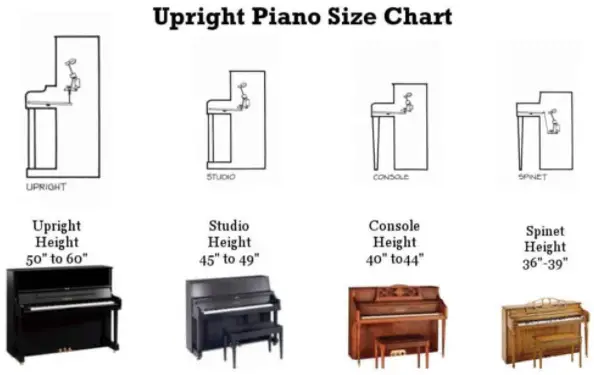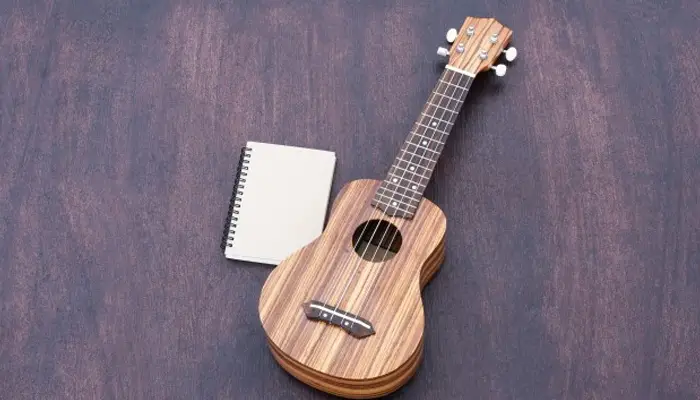
Are you curious about How Much Does a Upright Piano Weigh?
Understanding the weight of a piano is crucial, especially when considering moving or transporting one.
Upright pianos are vertical and have weight restricted in a small board, this decreases their overall area but increases the weight. When moving pianos in your house, you need to know how much a piano actually weighs.
In this guide, we’ll delve into the various factors influencing the weight of upright pianos and provide detailed insights to help you gain a comprehensive understanding.
Introduction:
Upright pianos, distinguished by their vertical orientation, offer a compact alternative to grand pianos while delivering rich musical tones. Understanding their weight variations is essential for piano enthusiasts and owners alike.
Anatomy of Upright Pianos:
Upright pianos consist of several key components, including the soundboard, strings, iron plates, wooden frame, keys, and pedals. Unlike grand pianos, which feature horizontally placed strings, upright pianos have vertically oriented strings, allowing them to occupy less space. However, this vertical alignment contributes to their weight, as certain components must be denser to maintain structural integrity.
Types of Upright Pianos
Upright pianos come in various sizes and styles, each serving specific purposes and catering to different preferences:
1. Spinets:
Spinets are the smallest type of upright piano, typically measuring around 36″ to 40″ in height and 39 inches in length. Despite their compact size, spinets offer decent sound quality and are suitable for home use, practice, and leisurely playing.
2. Console Piano:
Console pianos are slightly larger than spinets, standing at approximately 40″ to 43″ in height and 44 inches in length. They often feature a more robust construction and improved sound projection compared to spinets, making them suitable for both home and practice settings.
Bonus Tip: 17 Best Piano Books for Intermediate Players (Exclusive)
3. Studio Height Piano:
Studio height pianos, also known as studio upright pianos, are favored for professional use due to their balanced sound and durability. They typically range in height from 44″ to 48″ and offer enhanced tonal quality and dynamic range compared to smaller models.
4. Classic Upright Piano:
Classic upright pianos, also referred to as full-size upright pianos, are the largest and most substantial type of upright piano. Standing at 48″ to 60″ in height and 60 inches in width, these pianos offer superior sound quality, rich resonance, and expressive capabilities. They are commonly found in concert halls, music conservatories, and prestigious performance venues.
Bonus Tip: Best Cheap Keyboard Piano Under 100 Dollar (Useful List)
Chart for Weighing an Upright Piano

Here is a complete chart about upright pianos and how they differ from other pianos. We have mentioned the true weight of Spinet, Console, Studio, and Classic upright piano. As you can see, Spinet has the lowest weight at 100kgs. Console piano has around 200kgs of weight. Studio piano has around 200 kgs of weight, almost the same as that of console piano. Classic piano is far heavier with a weight close to 400kgs for a single piece.
| Vertical Pianos | Approx. Weight |
| Spinet Piano (36″-40″ height) | 200-400lbs (91-181kg) |
| Console Piano (40″-43″) | 350-450lbs (159-204kg) |
| Studio Piano (44″-48″) | 400-500lbs (181-227kg) |
| Upright Piano (48″-60″) | 500-1000lbs (227-454kg) |
Factors Affecting Piano Weight:
Several factors contribute to the weight of an upright piano, including:
1. Materials:
The materials used in the construction of an upright piano play a significant role in determining its weight. Common materials include sturdy lumber for the frame, dense iron plates for string tension, and various components such as keys, pedals, and action mechanisms.
2. Size and Design:
The size and design of the piano, including its length, width, and height, influence its overall weight. Larger pianos with more extensive wooden frames and longer strings tend to be heavier than smaller models, while certain design features, such as additional structural reinforcements or decorative elements, can also contribute to weight variations.
3. Internal Components:
The internal components of an upright piano, including the soundboard, strings, action mechanism, and damping system, also contribute to its weight. High-quality pianos often feature precision-engineered components designed for optimal performance and durability, which may add to the overall weight of the instrument.
How Much Does A Upright Piano Weigh In Kgs?
An upright piano can weigh somewhere from 91kgs to 400kgs depending on its size. Baby upright pianos like Spinets and Console can weigh around 150kgs to 200kgs. While the heavier upright pianos like Console or Classic can weigh somewhere between 200kgs and 400kgs.
In comparison with a grand piano which weighs around 600kgs to 700kgs, the weight of a classic upright piano is 400kgs to 450kgs depending on its design and the amenities available.
One reason for this is because in an upright piano, the strings are held vertically that makes the instrument compact. The grand piano, on the other hand, retains the same shape since the strings are held horizontally.
Practical Considerations for Moving Pianos:
Moving an upright piano requires careful planning and execution to ensure the safety of the instrument and those involved. Here are some practical considerations to keep in mind:
1. Assessment of Pathways:
Before moving the piano, assess the pathways and obstacles involved in the process, such as doorways, staircases, and narrow hallways. Measure the dimensions of these areas to ensure that the piano can be safely maneuvered without causing damage to the instrument or surrounding structures.
2. Use of Proper Equipment:
Use appropriate moving equipment, such as piano dollies, straps, and furniture blankets, to facilitate the safe transport of the piano. Avoid dragging or sliding the piano across the floor, as this can damage the instrument’s legs and finish. Instead, lift the piano carefully and use protective padding to prevent scratches and dents.
3. Professional Assistance:
Consider hiring professional piano movers who have the expertise, experience, and equipment to safely transport the instrument. Professional movers can ensure that the piano is properly secured and protected during transit, minimizing the risk of damage to the instrument and surrounding property.
4. Communication and Coordination:
Communicate effectively with all parties involved in the moving process, including movers, homeowners, and building managers. Coordinate logistics such as parking arrangements, elevator access, and scheduling to streamline the moving process and minimize disruptions.
5. Post-Moving Inspection:
After the piano has been moved to its new location, conduct a thorough inspection to ensure that it has arrived safely and without damage. Check for any signs of structural or cosmetic damage, such as cracks, scratches, or loose components, and address any issues promptly to prevent further damage.
Frequently Ask Questions
Here are a few frequently asked questions about Upright piano that you should know about.
Can I move a piano by myself
While moving a piano independently is possible for short distances, hiring professionals is advisable for longer journeys or challenging environments to minimize the risk of damage.
What makes an upright piano so heavy?
The weight of an upright piano primarily stems from dense materials like iron plates, sturdy lumber, and structural components necessary for its construction.
Conclusion:
We trust that this guide has provided valuable insights into the weight considerations associated with upright pianos. Whether you’re a seasoned pianist or a novice enthusiast, understanding these nuances can enhance your appreciation for these timeless musical instruments.
By considering factors such as piano type, construction materials, and practical moving considerations, you can make informed decisions and ensure the safe transport and enjoyment of your upright piano for years to come.
You can also check out our guide on the Best Piano Notes with Letters and Best Digital Piano Under 300 Dollars.



